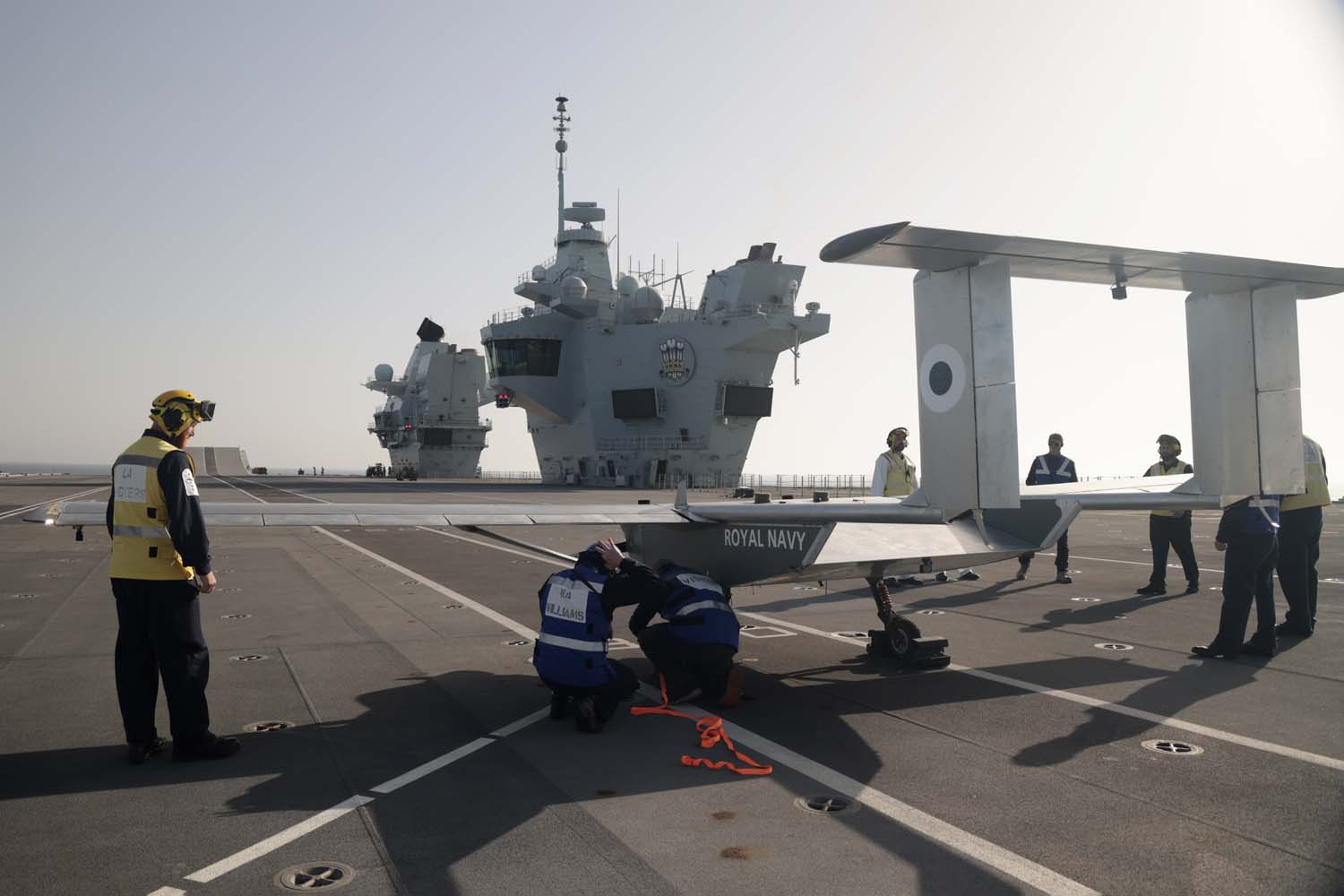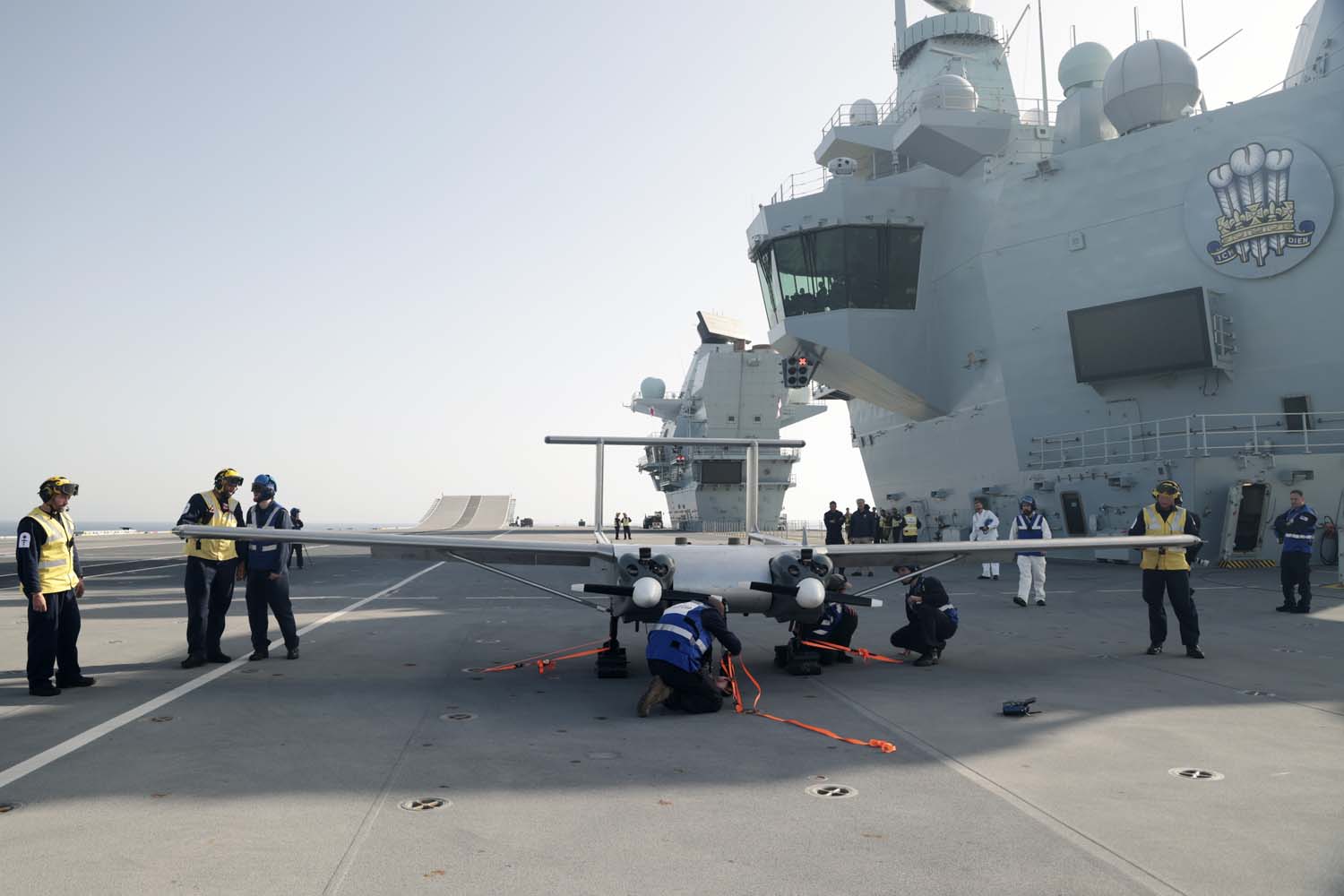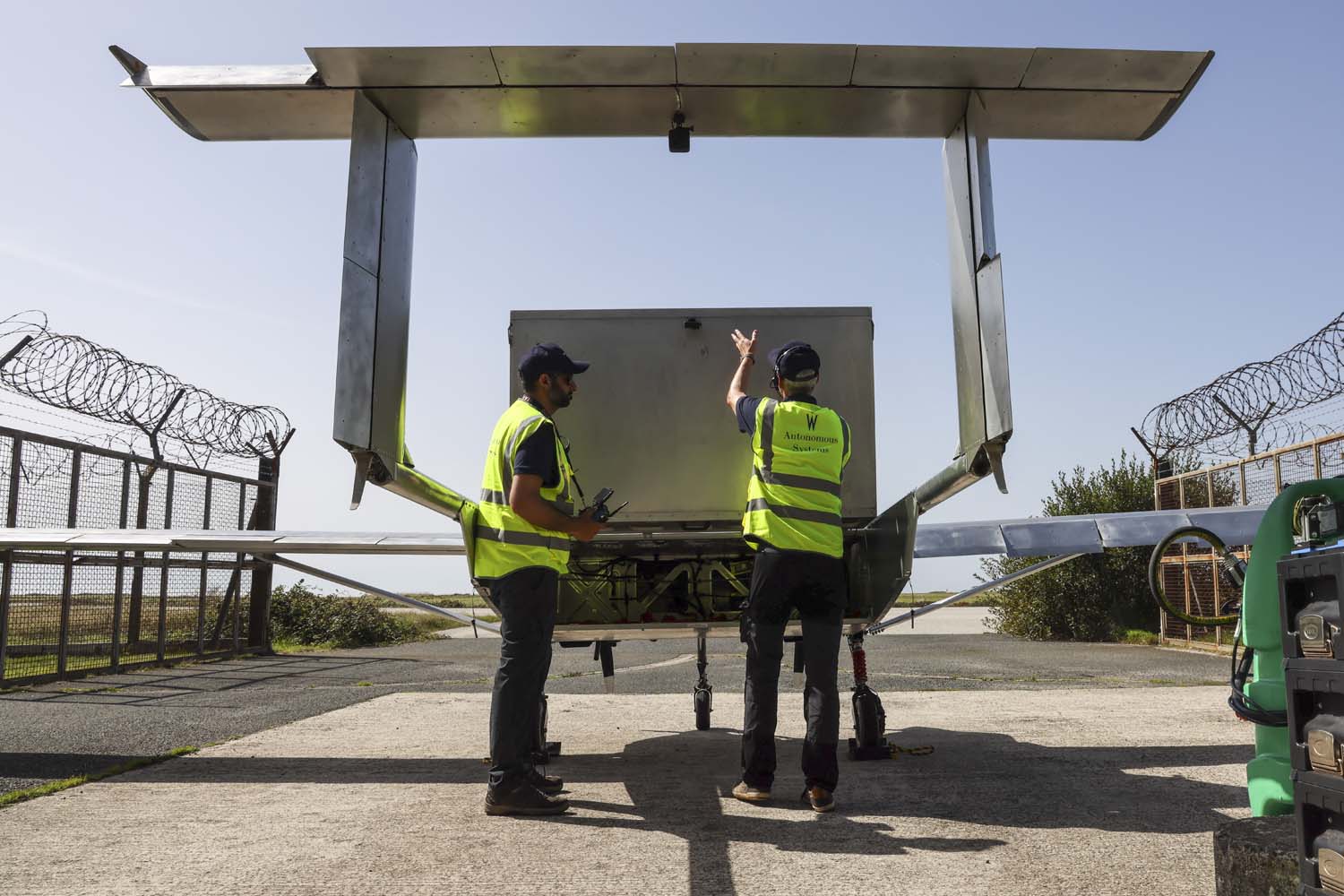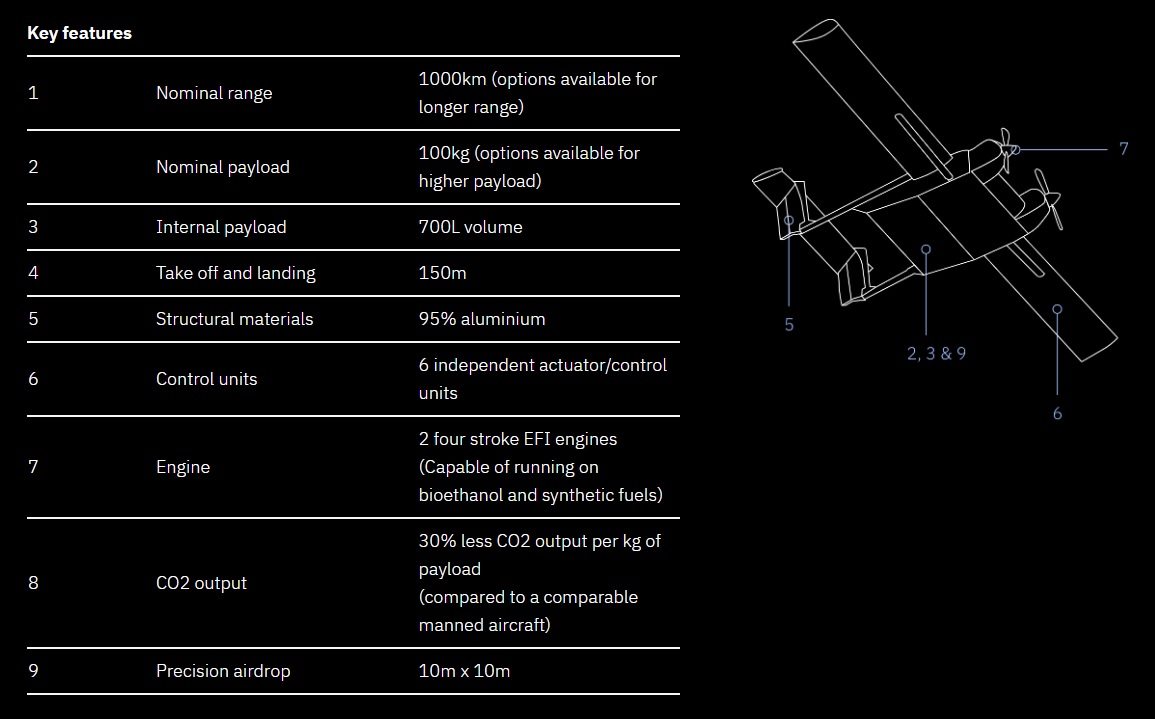Unmanned aircraft landed on a Royal Navy aircraft carrier for the first time
In a historic milestone, an unmanned aircraft landed, and then took off, from the aircraft carrier HMS Prince of Wales on the high seas.
The W Autonomous Systems (WAS) drone flew from the Lizard Peninsula to the deck of HMS Prince of Wales, off the coast of Cornwall, delivered supplies and returned in a landmark flight that points the way to the future of naval aviation.
✅first ever ?? fixed wing carrier drone landing!
Many more to come…
? ? pic.twitter.com/qeWTggL5hS
— HMS Prince of Wales (@HMSPWLS) September 8, 2023
This is a major step on the road to the safe deployment of unmanned aircraft alongside the F-35 Lightning aircraft and the Merlin and Wildcat naval helicopters, which currently form the backbone of the Royal Navy’s Air Fleet.
?? First ever Strike Carrier fixed wing drone launch ✅ ?? ?
More to come… pic.twitter.com/vYKo1jfpxK
— HMS Prince of Wales (@HMSPWLS) September 8, 2023
The Royal Navy informed that the aim is to deploy drones with a UK Carrier Strike Group in the future, using them to transfer provisions and supplies – such as mail or spare parts – between ships, without the need to use helicopters, which are more expensive to operate in these tasks.

Drones are cheaper to operate, eliminate any potential risk to the crew – for example, in adverse weather conditions – and free up the Merlin and Wildcats helicopters for operational missions, such as hunting hostile submarines or surface ships that pose a threat to the carrier strike group.
HMS Prince of Wales has experimented with drone technology before – notably small quadcopters and Banshee targets (small jets which are launched by catapult and parachutes down to land when the mission is complete). But the trials off the Lizard are in a different league, involving a much larger (ten-metre wingspan), more capable pilotless aircraft.

Captain Richard Hewitt, commanding officer of HMS Prince of Wales, commented:
“HMS Prince of Wales is a fifth-generation aircraft carrier and operating autonomous drones like this will become the norm across future Royal Navy Carrier Strike Groups in our 50-year lifespan.
See also: General Atomics develops a big-deck naval version of the MQ-9B
W Autonomous Systems and the Royal Navy
The British Royal Navy is working with W Autonomous Systems, a leading British company based in Southampton that is developing long-range, heavy-lift autonomous drones for Defense.

These drones incorporate an innovative autopilot system that eliminates the need for remote control by trained pilots, and are designed to operate in the harshest environments.
Its twin-engine HCMC light-alloy unmanned aircraft is capable of carrying a 100-kg payload up to 1,000 kilometers (620 miles). More importantly, it can land on rough terrain and needs a runway only 150 meters long – a little more than half the length of the flight decks of Britain’s Queen Elizabeth-class aircraft carriers – to land or take off.

After extensive ground preparations by the combined RN and WAS test team, the HCMC drone took off from Predannack, and after a flight of about 20 minutes landed safely on the deck of HMS Prince of Wales. Once its symbolic load of naval memorabilia had been removed by the crew, the aircraft turned around and was relaunched back to Predannack.

/https://aviacionlinecdn.eleco.com.ar/media/2023/09/Avion-no-tripulado-WAS-HMS-Prince-of-Wales-Royal-Navy-2.jpg)
Para comentar, debés estar registradoPor favor, iniciá sesión